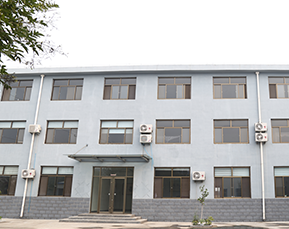 Afrikaans
Afrikaans  Albanian
Albanian  Amharic
Amharic  Arabic
Arabic  Armenian
Armenian  Azerbaijani
Azerbaijani  Basque
Basque  Belarusian
Belarusian  Bengali
Bengali  Bosnian
Bosnian  Bulgarian
Bulgarian  Catalan
Catalan  Cebuano
Cebuano  Corsican
Corsican  Croatian
Croatian  Czech
Czech  Danish
Danish  Dutch
Dutch  English
English  Esperanto
Esperanto  Estonian
Estonian  Finnish
Finnish  French
French  Frisian
Frisian  Galician
Galician  Georgian
Georgian  German
German  Greek
Greek  Gujarati
Gujarati  Haitian Creole
Haitian Creole  hausa
hausa  hawaiian
hawaiian  Hebrew
Hebrew  Hindi
Hindi  Miao
Miao  Hungarian
Hungarian  Icelandic
Icelandic  igbo
igbo  Indonesian
Indonesian  irish
irish  Italian
Italian  Japanese
Japanese  Javanese
Javanese  Kannada
Kannada  kazakh
kazakh  Khmer
Khmer  Rwandese
Rwandese  Korean
Korean  Kurdish
Kurdish  Kyrgyz
Kyrgyz  Lao
Lao  Latin
Latin  Latvian
Latvian  Lithuanian
Lithuanian  Luxembourgish
Luxembourgish  Macedonian
Macedonian  Malgashi
Malgashi  Malay
Malay  Malayalam
Malayalam  Maltese
Maltese  Maori
Maori  Marathi
Marathi  Mongolian
Mongolian  Myanmar
Myanmar  Nepali
Nepali  Norwegian
Norwegian  Norwegian
Norwegian  Occitan
Occitan  Pashto
Pashto  Persian
Persian  Polish
Polish  Portuguese
Portuguese  Punjabi
Punjabi  Romanian
Romanian  Russian
Russian  Samoan
Samoan  Scottish Gaelic
Scottish Gaelic  Serbian
Serbian  Sesotho
Sesotho  Shona
Shona  Sindhi
Sindhi  Sinhala
Sinhala  Slovak
Slovak  Slovenian
Slovenian  Somali
Somali  Spanish
Spanish  Sundanese
Sundanese  Swahili
Swahili  Swedish
Swedish  Tagalog
Tagalog  Tajik
Tajik  Tamil
Tamil  Tatar
Tatar  Telugu
Telugu  Thai
Thai  Turkish
Turkish  Turkmen
Turkmen  Ukrainian
Ukrainian  Urdu
Urdu  Uighur
Uighur  Uzbek
Uzbek  Vietnamese
Vietnamese  Welsh
Welsh  Bantu
Bantu  Yiddish
Yiddish  Yoruba
Yoruba  Zulu
Zulu snub roller
Understanding the Snub Roller Its Importance in Conveyor Systems
The snub roller is a crucial component in conveyor systems, playing a vital role in optimizing efficiency and enhancing the functionality of material handling processes. This specialized roller is designed to redirect the path of the conveyor belt, providing essential tension and support to ensure smooth and effective operation. Understanding the snub roller's purpose, design, and significance can offer valuable insights into its applications in various industries.
At its core, the snub roller is a cylindrical device that is positioned at specific points along the conveyor belt. It typically interfaces with the conveyor head and tail pulleys, allowing the belt to maintain proper tension and alignment. By engaging the belt at an angle, the snub roller enables greater wrap around the driving pulley, which enhances the friction between the belt and the pulley surface. This increase in contact angle results in improved power transmission and prevents slippage, which can occur in high-load conditions.
One of the key advantages of using a snub roller is its contribution to prolonging the lifespan of both the conveyor components and the belt itself
. When a conveyor belt is consistently taut and properly aligned, it experiences less wear and tear, reducing the frequency of replacements and maintenance interventions. This not only leads to cost savings but also minimizes downtime, allowing operations to run more smoothly and efficiently.snub roller

In addition to enhancing belt tension, snub rollers assist in maintaining the overall alignment of the conveyor system. Misalignment can lead to significant operational issues, such as belt tracking problems, which may cause the belt to slip off its intended path. The effective use of snub rollers helps to guide the belt, ensuring that it remains centered and reduces the risk of misalignment or damage to the conveyor structure.
Moreover, snub rollers are designed with durability in mind. They are typically made from high-quality materials that can withstand harsh environments, including exposure to abrasive materials, extreme temperatures, and heavy loads. The operational reliability of snub rollers makes them essential for industries such as mining, manufacturing, and logistics, where material transportation plays a critical role in productivity.
The installation and maintenance of snub rollers are also relatively straightforward, making them a practical choice for companies looking to enhance their conveyor systems. Regular inspections and timely replacements can ensure that the rollers function optimally, providing continued support and efficiency in material handling processes.
In conclusion, the snub roller is a vital component in conveyor systems that plays a significant role in maintaining belt tension, ensuring alignment, and enhancing the overall performance of the conveyor. Its importance cannot be understated, as it contributes to the smooth operation and efficiency of various industries. By understanding its functionality and benefits, businesses can make informed decisions about their material handling systems, ultimately leading to increased productivity and minimized operational costs.
-
Revolutionizing Conveyor Reliability with Advanced Rubber Lagging PulleysNewsJul.22,2025
-
Powering Precision and Durability with Expert Manufacturers of Conveyor ComponentsNewsJul.22,2025
-
Optimizing Conveyor Systems with Advanced Conveyor AccessoriesNewsJul.22,2025
-
Maximize Conveyor Efficiency with Quality Conveyor Idler PulleysNewsJul.22,2025
-
Future-Proof Your Conveyor System with High-Performance Polyurethane RollerNewsJul.22,2025
-
Driving Efficiency Forward with Quality Idlers and RollersNewsJul.22,2025





























